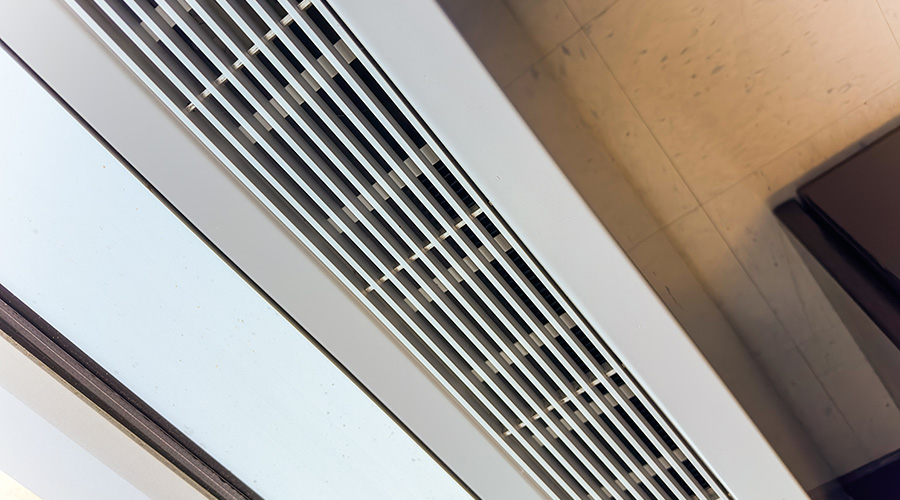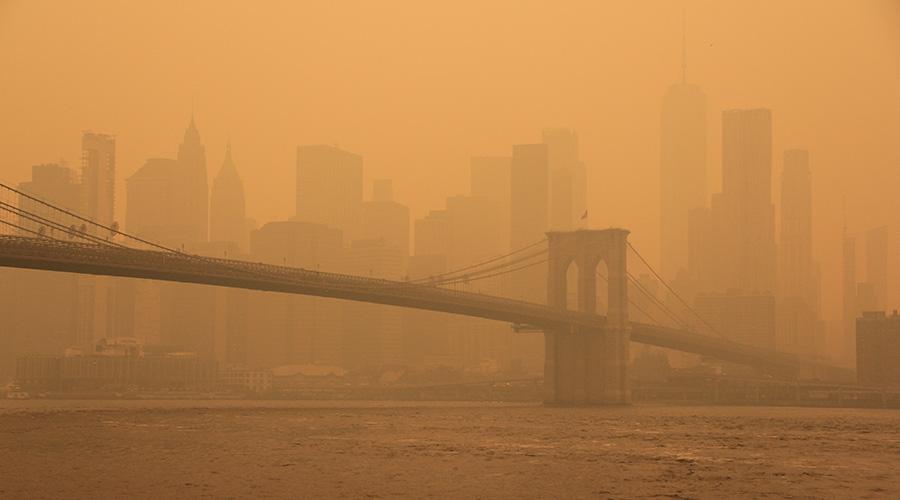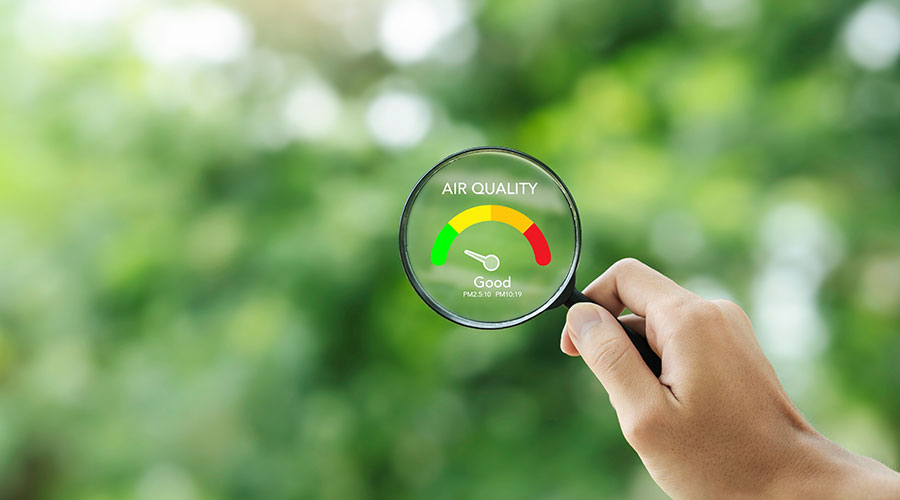IAQ and the Older Facility
Attention to key HVAC components can help managers improve the indoor environment in aging facilities
Maintenance and engineering managers face a particularly tough task when it comes to keeping older facilities operating efficiently. Older equipment and building systems — many of which are approaching or have surpassed their rated service lives — become difficult to maintain and operate.
The operations performed in many of these facilities also have changed dramatically since the facility was constructed, placing demands on those systems that make it even more difficult to maintain a suitable environment for building occupants. And with increasing concerns over indoor air quality (IAQ), particularly with respect to mold prevention and remediation, the task for managers might seem impossible.
But maintaining proper IAQ, even in older facilities, is not an impossible task. The age and performance characteristics of the systems will impose limits, but in most cases, managers will be able to provide proper IAQ without having to scrap their existing systems.
Equipment Inventory Issues
A major obstacle managers of older facilities face is knowing about the equipment and systems they have and the challenges they present. Over the years, documentation is lost. Plans for original systems, even when they are available, often do not reflect the changes made when occupancy patterns and needs changed within the facility.
Manuals for operations and maintenance, as well as reports for testing and balancing frequently are lost or badly outdated. Even the inventory of installed equipment and they areas they serve are often outdated.
Managers can start the process by updating existing equipment and system inventory, including the type of equipment installed, the date it was installed or last renovated, the areas it serves, and modifications that have been made to it. By knowing the base installed of equipment and its functions, managers can avoid costly mistakes when it comes to correcting IAQ problems.
Next, managers can assess the condition of existing equipment. Is it adequate for the task that it must perform? Is it operating properly, or has it deteriorated enough to require overhaul or replacement? How well has the equipment been maintained?
Next, managers can conduct a walk-through IAQ assessment, noting conditions throughout the facility. Identify pollutant sources and their location. Look for discoloration by HVAC-system vents, a possible warning sign of mold or excessive dirt levels. Inspect walls and other surfaces, particularly those below grade, for signs of biological activity. Identify areas having a musty odor, also an indication that mold might be present.
During the walk-through, talk to building occupants. What kind of problems have they been experiencing? Are those problems continuous, or do they occur only during set times? Their complaints about air quality might help in identifying problems.
While the approach to solving IAQ problems requires examining all HVAC equipment, most problems occur in three systems: air handlers, filtration equipment, and cooling towers. By focusing on testing and inspecting these three components, managers can reduce the magnitude and frequency of problems that occur.
Air Handlers
One of the first things managers should check if they suspect an air handler is causing poor IAQ is the outside air intake. Intakes located too close to sources of odors and pollutants can easily draw them into buildings.
For example, outside-air intakes should be located well away from loading docks, parking garages, Dumpsters, and building-exhaust fans to prevent fumes from being drawing into the building. In some cases, simply moving the intake a few feet might be enough to limit the amount of fumes being drawn into the system. At least twice a year, technicians should inspect all outside air intakes. Standing water near an intake can produce spores, which the intakes can suck into the system and distribute throughout the building. Bird nests and decaying leaves in intakes also can introduce contaminants into the air handler.
Cooling coils and condensate pans within air handlers are ideal breeding grounds for bacteria, mold and fungi because they are constantly wet when the system is cooling. At each filter change, technicians should inspect coils and condensate pans for biological growth and dirt buildup. They also should inspect condensate pans to make certain they drain properly and don't allow water to stagnate or to be blown downstream in the ductwork.
Next, they should clean coils, condensate pans, and ductwork immediately downstream at least twice each year using an approved cleaner that kills biological growth without damaging metal surfaces.
Finally, they should test air handlers to determine if they meet ventilation air requirements for the type of activity being performed and follow the ventilation rates published in ASHRAE Standard 62-1999, Ventilation for Acceptable Indoor Air Quality.
Filtration Equipment
Although filtration equipment is part of the air-handler system, its role in ensuring proper IAQ is so important that managers should treat it with extra consideration. Air filters are designed to prevent dirt drawn into the air-handling system from reaching coils, ductwork, and interior spaces.
Managers should base filter selection on facility needs, including contaminants present in the air and the required level of filtration. Selecting the lowest-cost filter will not provide the level of protection needed.
In selecting filters, managers must balance efficiency with operating cost. The higher the efficiency, the smaller the particles removed from the air. But higher efficiency also means a greater pressure drop across the filter, resulting in increased fan energy requirements to maintain the same airflow rate. So managers should match performance to facility requirements.
Once filters are in place, technicians need to change them regularly. The most common practice is to change filters on a set schedule based on their appearance. It is far better, however, to change filters based on the measured pressure drop across the filter.
As the filter traps dirt particles, the pressure drop increases. If it increases too much, air can bypass the filter bank, or portions of the filter bank can collapse, allowing unfiltered air to enter the system.
If technicians change filters before such problems arise, operating costs will be unnecessarily increased. So managers should ensure that all systems are equipped with a differential pressure gauge that technicians read regularly.
Aside from monitoring the pressure drop, technicians also should inspect filters monthly. Filters capture dust, dirt and other materials that serve as food for mold and other microbiological organisms. Allowing biological growths to form on a system's filter bank will result in its spread throughout the entire system.
Cooling Towers
Although cooling towers are isolated from the air-systems operating within a building, they can be a major source of microbiological growth, including bacteria that causes Legionnaires Disease. Depending on the concentration of growth within a cooling tower, wind direction, and the relative position of a building's air intakes, moisture from the tower carrying the bacteria can enter the building supply air.
A good program of chemical water treatment will reduce the chances that the tower will serve as an incubator for microbiological growth. Constant monitoring of the water quality will help ensure that the chemical treatment program is delivering the desired results.
Technicians should inspect towers at least monthly to make sure all components are free of visible biological growth. They also need to make certain to properly adjust all drift eliminators and make sure they are securely in place to reduce the quantity of wind-borne water droplets.
Proper attention to essential HVAC components can help managers develop a strategic and comprehensive approach to improving IAQ, one that also can help to ensure system efficiency and to detect small problems before they become major headaches.
When Maintenance Isn’t Enough
Although a comprehensive maintenance program will reduce or eliminate many common causes of poor indoor air quality (IAQ), conditions within a facility might require additional measures. For example, if an outside source of gaseous contaminants exists — such as automobile or diesel fumes — and cannot be eliminated, managers might opt to install a gas-phase absorber as part of the HVAC filtration system.
Once restricted to industrial applications, absorbers are gaining more widespread acceptance in institutional and commercial applications. Basic requirements include room for the additional filter racks within an HVAC system and careful matching of the absorbent to contaminants.
Another filtration system designed to improve building IAQ uses ultraviolet (UV) light to kill fungi, bacteria and viruses found in the HVAC system's air stream. To be effective, UV systems must fully expose the duct’s entire air flow, which must be slow enough to give the light time to act on the microorganisms.
Neither gas absorbers nor UV systems remove particulate contaminants from the air, so managers must apply them in conjunction with conventional air-filtration systems. In retrofit applications, this might pose a problem in finding enough space for installation. While neither system will correct for poor maintenance practices, both can help managers to improve IAQ in applications with specific requirements.
|
Related Topics:











